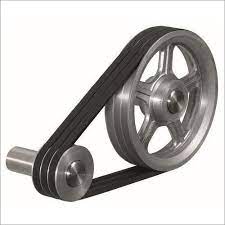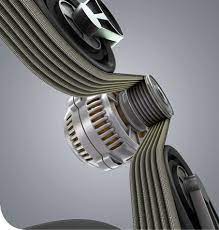Product Description
Product Parameters
| Type | Belt width(mm) | Standard Diameter(mm) | Length(mm) |
| Drive Pulley | 500 | 500 |
Length of the pulley depends on the belt width of the conveyor |
| 650 | 500~630 | ||
| 800 | 630~1000 | ||
| 1000 | 800~1150 | ||
| 1200 | 800~1150 | ||
| 1400 | 1000~1350 | ||
| 1600 | 1150~1600 | ||
| 1800 | 1150~1800 | ||
| 2000 | 1350~2000 | ||
| 2200 | 1600~2200 | ||
| 2400 | 1800~2400 | ||
| Bend Pully | 500 | 250~500 | |
| 650 | 250~630 | ||
| 800 | 250~1000 | ||
| 1000 | 250~1600 | ||
| 1200 | 250~1600 | ||
| 1400 | 315~1600 | ||
| 1600 | 400~1600 | ||
| 1800 | 400~1600 | ||
| 2000 | 500~1600 | ||
| 2200 | 630~1600 | ||
| 2400 | 800~1600 |
Product Description
Detailed Photos
Packaging & Shipping
/* January 22, 2571 19:08:37 */!function(){function s(e,r){var a,o={};try{e&&e.split(“,”).forEach(function(e,t){e&&(a=e.match(/(.*?):(.*)$/))&&1
| Material: | Carbon Steel |
|---|---|
| Surface Treatment: | Polishing |
| Motor Type: | No |
| Installation: | Horizontal |
| Type: | Drive,Head,Bend,Snub,Tail,Take up,Crown,Driving |
| Surface: | Diamond,Chevron,Urethane,Ceramic,Plain,Smooth |
| Customization: |
Available
| Customized Request |
|---|

How do you select the right drive belt pulley for a specific vehicle or machinery?
Selecting the right drive belt pulley for a specific vehicle or machinery involves considering several factors to ensure optimal performance and compatibility. Here’s a detailed explanation of the selection process:
1. Determine the Belt Type:
Identify the type of belt required for the application. Common belt types include V-belts, timing belts, flat belts, and ribbed belts. Each belt type has specific design features and requirements that dictate the corresponding pulley design.
2. Determine Power Requirements:
Calculate or determine the power requirements of the system. Consider factors such as the torque and speed requirements, as well as the desired power transmission efficiency. This information will help determine the appropriate pulley size and design to handle the required power load.
3. Consider Speed Ratio:
If the application requires a specific speed ratio between the driving and driven components, such as in timing systems or variable speed applications, calculate the desired speed ratio. This will guide the selection of pulley sizes and the number of teeth or grooves required for proper speed synchronization.
4. Assess Space Constraints:
Evaluate the available space and clearance within the machinery or vehicle. Consider factors such as pulley diameter, width, and overall dimensions. Ensure that the selected pulley can be properly installed and aligned within the available space without interfering with other components.
5. Check Shaft Requirements:
Verify the dimensions and specifications of the shafts on both the driving and driven components. Consider factors such as shaft diameter, keyway size, and shaft mounting options. Ensure that the selected pulley has the appropriate bore size and shaft attachment mechanism to fit the shafts securely.
6. Assess Pulley Material and Construction:
Consider the operating conditions and environment in which the pulley will be used. Evaluate factors such as temperature, humidity, chemical exposure, and abrasive conditions. Choose a pulley material and construction that can withstand these conditions, such as steel, cast iron, aluminum, or plastic.
7. Consult Manufacturer Specifications:
Refer to the manufacturer’s specifications and guidelines for the specific vehicle or machinery. Manufacturers often provide recommendations and guidelines for selecting the appropriate pulleys based on their products’ design and requirements. These specifications may include pulley dimensions, belt compatibility, and power handling capabilities.
8. Seek Expert Advice if Required:
If you are unsure about the selection process or have specific requirements, it is advisable to consult with experts or manufacturers who specialize in power transmission systems. They can provide guidance and recommendations based on their expertise and experience.
By considering these factors and following the selection process, you can choose the right drive belt pulley for a specific vehicle or machinery. This ensures compatibility, optimal power transmission, and reliable operation, contributing to the overall efficiency and performance of the system.

How does the size and design of a drive belt pulley affect its performance?
The size and design of a drive belt pulley have a significant impact on its performance in power transmission systems. Here’s a detailed explanation of how the size and design of a drive belt pulley affect its performance:
1. Speed Ratio and Torque:
The size of a drive belt pulley directly affects the speed ratio and torque transmission between the driving and driven components. A larger pulley diameter relative to the driven component’s pulley diameter will result in slower rotational speed but higher torque transfer. Conversely, a smaller pulley diameter will increase the rotational speed but reduce the torque. The selection of the appropriate pulley size ensures that the desired speed and torque requirements are met for efficient power transmission.
2. Belt Tension and Grip:
The size and design of a drive belt pulley play a crucial role in maintaining proper belt tension and grip. A pulley with a larger diameter provides a larger contact area for the belt, resulting in increased tension and improved grip. This helps prevent belt slippage, especially under high loads or during sudden accelerations. Additionally, the pulley design, including the shape and depth of the grooves, affects the belt’s engagement and grip, further influencing the overall performance and reliability of the power transmission system.
3. Speed and Power Output:
The size and design of a drive belt pulley can impact the speed and power output of the driven component. By adjusting the pulley size, the rotational speed of the driven component can be modified. For example, a larger pulley diameter will reduce the speed of the driven component, while a smaller pulley diameter will increase the speed. This allows for customization of the power output to match the specific requirements of the driven component, optimizing its performance within the system.
4. Belt Life and Durability:
The size and design of a drive belt pulley can affect the life and durability of the belt. When a pulley is properly sized and designed, it helps distribute the belt’s load evenly, reducing stress and wear on the belt. A pulley with the correct dimensions and a suitable design minimizes the risk of excessive bending, stretching, or misalignment, which can lead to premature belt failure. By ensuring proper belt alignment and reducing excessive tension, the size and design of the pulley contribute to the longevity and reliability of the belt.
5. System Efficiency:
The size and design of a drive belt pulley impact the overall efficiency of the power transmission system. An appropriately sized pulley reduces friction losses and improves energy transfer between the driving and driven components. By minimizing energy losses due to slippage or misalignment, the system efficiency is enhanced, resulting in improved overall performance, reduced power wastage, and increased fuel efficiency in automotive applications.
6. Noise and Vibration:
The size and design of a drive belt pulley can influence the levels of noise and vibration in the power transmission system. A well-designed pulley with proper dimensions and groove profiles helps to minimize belt slippage and reduce vibrations caused by uneven loading. Additionally, a balanced pulley design reduces potential vibrations that can propagate through the system, resulting in quieter and smoother operation.
7. System Compactness:
The size and design of a drive belt pulley contribute to the overall compactness of the power transmission system. By selecting pulleys with appropriate dimensions, it is possible to optimize the packaging of the system components, allowing for efficient use of space. This is particularly important in applications with limited space, such as automotive engines, where compactness is essential for proper integration and overall vehicle design.
Overall, the size and design of a drive belt pulley have a significant impact on its performance in power transmission systems. Proper sizing and design considerations ensure optimal speed ratio, torque transfer, belt tension, grip, speed and power output, belt life and durability, system efficiency, noise and vibration levels, and system compactness. By carefully selecting and designing drive belt pulleys, efficient and reliable power transmission can be achieved for various applications.

What types of drive belts are typically employed with drive belt pulleys?
Drive belt pulleys are commonly used in conjunction with different types of drive belts, depending on the specific application and requirements. Here’s a detailed explanation of the types of drive belts typically employed with drive belt pulleys:
1. V-Belts:
V-belts are one of the most commonly used types of drive belts with drive belt pulleys. They have a trapezoidal cross-section and typically feature a fabric cover and rubber construction. V-belts are designed to fit into the V-shaped grooves of the pulley and provide reliable power transmission. They are known for their flexibility, high friction grip, and ability to handle high-speed applications. V-belts are commonly used in automotive engines, industrial machinery, and various power transmission systems.
2. Serpentine Belts:
Serpentine belts, also known as multi-rib belts, have a flat cross-section with multiple ribs on one side. These belts wrap around multiple pulleys, including drive belt pulleys, in a serpentine pattern. Serpentine belts are commonly used in modern vehicles as they can drive multiple components simultaneously, such as the alternator, water pump, power steering pump, air conditioning compressor, and more. They offer efficient power transmission, high load-carrying capacity, and reduced slippage.
3. Timing Belts:
Timing belts, also referred to as toothed belts, have teeth on the inner side that mesh with corresponding grooves in timing pulleys. These belts are primarily used in engines to synchronize the rotation of the crankshaft and camshaft, ensuring precise valve timing. Timing belts are made of a flexible, reinforced material, usually rubber with embedded fibers or cords, providing excellent power transmission and resistance to wear. They are commonly used in automotive engines and other applications where timing precision is critical.
4. Flat Belts:
Flat belts have a rectangular cross-section and are made of materials such as rubber, leather, or fabric. They are often employed in applications where high-speed power transmission is required with minimal vibration and noise. Flat belts typically run on flat pulleys, which can include drive belt pulleys. They are commonly used in industrial machinery, agricultural equipment, and conveyor systems.
5. Ribbed Belts:
Ribbed belts, also known as micro V-belts or multi-rib belts, have a ribbed cross-section with multiple longitudinal ribs on one side. These ribs fit into corresponding grooves on the pulley, providing a larger contact area and enhanced power transmission capabilities. Ribbed belts are commonly used in automotive engines, power tools, and appliances. They offer high flexibility, excellent grip, and can transmit higher loads compared to standard V-belts.
6. Variable Speed Belts:
Variable speed belts, also called adjustable speed belts or link belts, are designed to provide a variable speed drive. They consist of multiple individual links connected by metal or plastic hinges. These belts can be adjusted in length by adding or removing links, allowing for flexibility in speed and torque transmission. Variable speed belts are commonly used in applications where speed variation is required, such as HVAC systems, agricultural machinery, and industrial equipment.
These are some of the types of drive belts typically employed with drive belt pulleys. The selection of the appropriate drive belt depends on factors such as the application, power requirements, speed, load, and specific performance characteristics needed for optimal power transmission.


editor by CX
2024-04-10